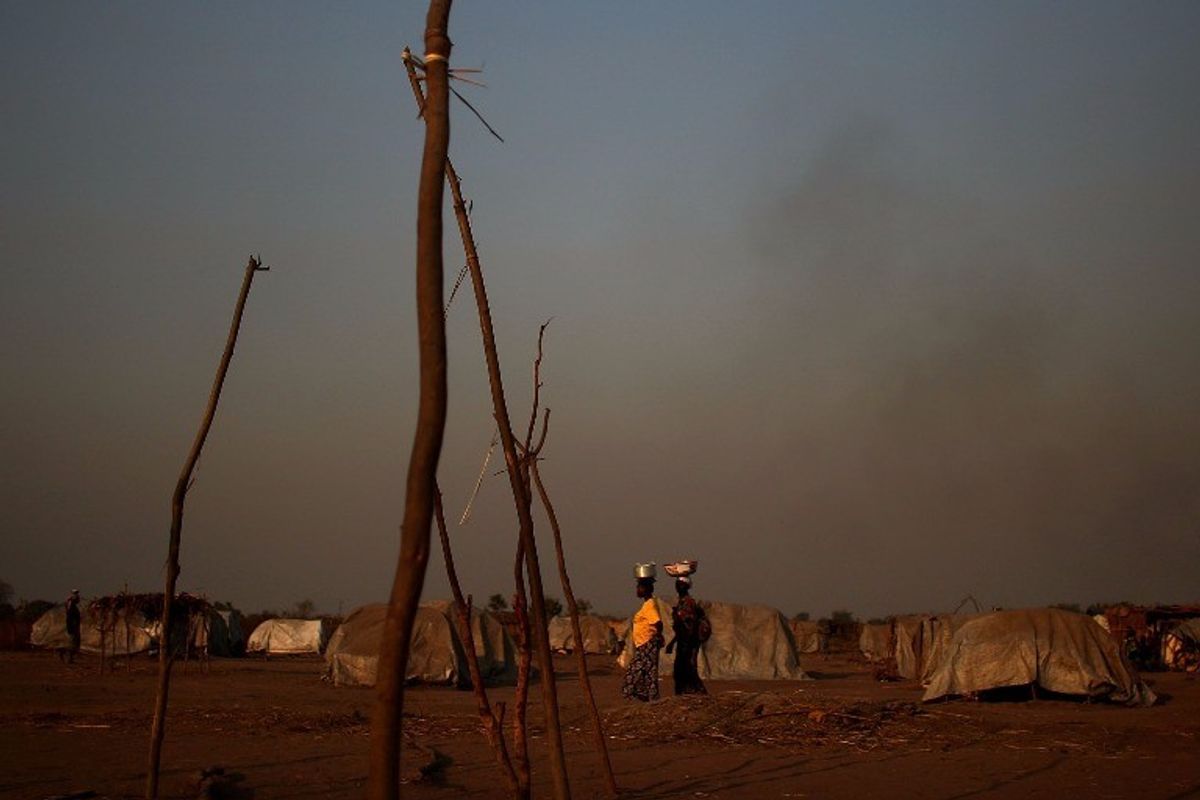As ISIS’s hold of its capital of Raqqa disintegrates, and the rubble of a razed Aleppo settles, a trend is beginning to emerge – war is becoming increasingly urbanized.
Conflict follows humanity wherever it goes, and the world’s population is increasingly living in cities. Waning are the days of the Maoist blueprint of rural insurgents pillaging small peripheral villages and seeking refuge in the hard terrain of mountainous caverns, dense forests, or expansive deserts. Soon terrorist and insurgent groups will mount operations from crowded slums and ritzy skyscrapers – not just in a dense urban landscape, but in coastal megacities that pose a unique challenge for which the U.S. military largely remains unprepared.
The United Nations estimated in 2016 that some 55 percent of the world’s population lives in urban areas, which will grow to 60 percent by 2030. There are 512 cities of at least one million inhabitants around the world, and this too is expected to grow to 662 cities by 2030.
Over the same time period, the number of megacities – or overlapping urban landscapes home to at least 10 million residents – is expected to grow from 31 to 41 – many of which are emerging in the developing world which will soon be economic, political, and cultural centers of gravity in the international political order.
In anticipation of this explosive urbanization, the U.S. military needs to adapt to operating within sprawling metropolitan environments.
“In the future, I can say with very high degrees of confidence, the American Army is probably going to be fighting in urban areas,” General Mark Milley, the Army Chief of Staff remarked last year. “We need to man, organize, train and equip the force for operations in urban areas, highly dense urban areas, and that’s a different construct.”
Urban warfare, however, is not just a future phenomenon – though the characteristics of it are changing. Entire armies have faced off in cities before – the Battle of Stalingrad in 1942, for example. Similarly, civil wars have involved devastating aerial and artillery sieges of entire cities housing those fighting in opposition to their governments, including battles such as Russian and Syrian 2016 air campaigns over Aleppo, Russian operations against Chechen separatists in Grozny in 1995, or Serbian bombardment of Sarajevo in 1992.
But simply leveling a city to the ground does little to actually address the rumblings of insurgency – it could even reinvigorate discontent and insurgent efforts. Such operations require a close combat presence on the ground – a necessity the Israeli army continues to encounter in their operations in the densely crowded Gaza Strip. Perhaps a harbinger of the challenges to come with urban counterinsurgency is the French campaign in Algiers in the 1950s – leading to an estimated 350,000 Algerian civilian deaths and the cascade of decolonization.
Furthermore, megacities such as Lagos, Cairo, Karachi, Dhaka, Johannesburg, Luanda, Dar-es-Salaam, Kinshasa, and Mumbai will be global economic hubs, with some being home to major ports, financial centers, or critical industries on which the rest of the world relies. Merely laying siege to neighborhoods within these megacities in order to route out insurgents is not a strategically sound option and evacuating millions of innocent civilians prior to fighting is a logistical nightmare. Battles in these hubs will have significant economic and political ripple effects, as the Syrian migrant crisis currently facing Europe shows.
Wars of the future will not be fighting for cities, but rather fighting within them. Counterinsurgency of the future will take place in peripheral slums, along narrow backstreets, and among a metropolis of civilians going about their days.
U.S. military operations in Mogadishu, Sadr City, Fallujah, and more recently Sirte provide insight into the challenges of operating in these environments, but on a much smaller scale. Importantly, megacities are not just big cities, but a unique and constantly adapting system of systems, where the casual link between destabilizing neighborhoods rippling across the city and into the region and the world is difficult to determine.
Perhaps the defining characteristic of the future of counterinsurgency in megacities is the omnipresence of innocent civilians. This creates a number of implications – most notably the risk of collateral damage that could undermine the counterinsurgency efforts.
“Insurgents are often highly indifferent to the civil casualties they themselves cause, blaming them on their opponents,” said Vanda Felbab-Brown, a Senior Fellow in the Center for 21st Century Security and Intelligence at the Brookings Institution. “They often purposefully seek to provoke the counterinsurgent forces to inflict civilian casualties as well. Yet, across the world, the political costs of civilian casualties tend to be far higher for governments than for the insurgents or criminal groups.”
Air power – the strategic panacea of Western policymakers adverse to the true human and financial costs that the desired objectives of war demand – will no longer maintain the same usefulness that it does against rural insurgents.
While “danger close” tactical drone strikes and aerial reconnaissance may have enabled the street-to-street fighting in Sirte, such operations will be severely limited over expansive megacities. The threat of civilian casualties is often too high, even for many precision-guided munitions with limited blast radius, and buildings and layers of infrastructure often obscure a clear overhead view.
Furthermore, the danger of inadvertently causing harm to a city’s bystanders “limits not only the choice of weapons, but also the choice of allies,” said Felbab-Brown.
“If local militias or warlords are recruited for counterinsurgency operations, the formal counterinsurgent forces need to be ready and willing to disarm them after the campaign’s completion and promote accountable, equitable, and non-discriminatory governance,” she added.
Insurgent groups will also be able to establish mutually beneficial relationships with local groups, such as organized criminal networks. As they are already operating out of global economic centers with the necessary infrastructure, these criminal networks will provide access to established illicit trafficking routes for weapons and other vital supplies – such as perhaps commercial drones, explosives, or even biological or chemical agents – as well as a consistent means to fund their operations locally.
While the advantage of heavy weaponry a counterinsurgent force has enjoyed in the past will become limited in megacities, ground forces, such as tactical counterterrorism units or special operations forces, will encounter related challenges as a result of the physical terrain within a burgeoning metropolis. Urban canyons between skyscrapers with vantage points from windows and rooftops along bustling narrow networks of streets and alleys increase avenues of approach for insurgents to ambush troops, all while hindering the counterinsurgent’s line of sight. Subterranean layers such as subways and sewers only further this problem, allowing militants to attack and disappear at will.
“The United States and its allies – who care about minimizing civilian casualties and avoiding damage to urban infrastructure – have invested heavily in new technologies for precision close air support, small-diameter bombs, mine-resistant ambush protected vehicles, sophisticated intelligence and targeting systems, and vehicle self-defense suites to help forces survive and operate in cities while doing the minimum possible damage,” says David Kilcullen, the former Special Advisor for Counterinsurgency to the U.S. Secretary of State.
But crowded urban venues still give would-be terrorists ample opportunity to wreak havoc. The tactics used in attacks against the Tokyo subway in 1995, Mumbai in 2008, the Westgate mall in Nairobi in 2013, the Bataclan theater in Paris in 2015, the 2016 Nice attack, and the recent mass shooting in Las Vegas and devastating truck bomb in Mogadishu provide vivid examples of the damage urban militants are capable of – all with limited planning, easily attainable tools of attack, and few resources required.
While urban insurgents are now able to leverage commercial technologies such as Google Earth satellite imagery and small hobby drones capable of aerial reconnaissance for maneuver, targeting, and explosives delivery, there are new technologies being developed for counterinsurgents as well. What is particularly necessary, are tools to differentiate insurgents hiding among millions of residents in order to detect and preempt their operations.
New technologies at the disposal of counterinsurgents “include sophisticated biometric, facial recognition, and biochemical sensing systems to detect explosive residues or track individuals in crowded spaces, as well as big-data techniques to monitor and respond rapidly to subtle but detectable changes in an urban environment,” said Kilcullen.
“They include new counter-sniper, counter-IED, and counter-drone technologies, techniques for emplacing and employing mesh-networks of ground-based and airborne sensors, and new organizational structures – smaller, more modular but better protected units that can more effectively operate in urban areas,” he added.
Just as insurgent and terrorist groups are now adapting to operate in dense urban environments – including the megacities of the future – so are counterinsurgent forces, an evolution that requires a change in mindset about the use of unconventional military power.
“Co-evolution,” according to Kilcullen, “is the name of the game here.”
Levi Maxey is a cyber and technology analyst at The Cipher Brief. Follow him on Twitter @lemax13.










